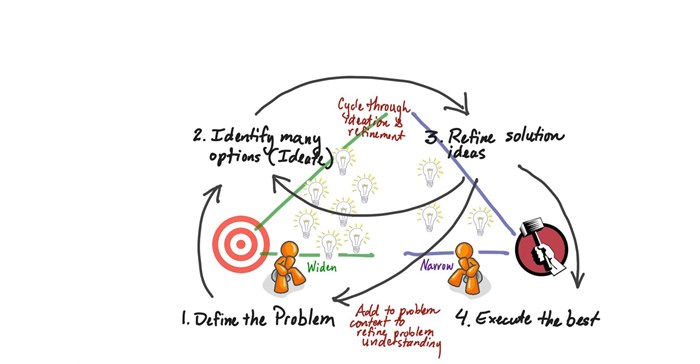With the increasing notoriety of designer practices since the 1970s, the term "design thinking" was born in the early 2000s and became a mysterious, sacred tool for innovation.

Design thinking
Beyond representing the designer's ways of thinking and practices, design thinking evokes the spirit and practices outside its original context. It is an approach or process that was promoted into a non-specialist audience of companies, allowing them to benefit from its logic and tools in order to see problems from a new perspective and to bring atypical solutions.
Although the term is quite hot at the moment, organisations are increasingly looking to drive improvements and innovations in their businesses with the strategic significance of this approach.
Whether you're looking for innovation, new services, new products, or new solutions to problems, the impact of design thinking is significant, in any field. As Designworks strategy director Luke Van O puts it: "I would be surprised to find any situation in any business that couldn't be served by a design thinking approach. It's a method, a way of looking at things, an alternative process to finding a way through."
To begin with, the user is generally at the core of the approach. Far from positioning design as a cosmetic element encapsulating the conception of a product or service, the design thinker focuses on observing clients' uses and practices as a basis to his approach. He must go out on the ground and stand in the shoes of the actual customer to get a feel for what they experience. He needs to also engage with stakeholders at all levels to make sure he embraces a complete vision of the problem. There are other streams among design thinking researchers though. For instance, some believe that it is better not to engage with the customer too much, so that you can see beyond their direct environment. As in Steve Jobs' famous quote regarding customers: "Until you show them, they don't know".
In corporations, design thinking is typically a technique of problem-solving aimed at re-thinking a problem from scratch. Where strategic and management thinking would typically quickly find a solution, the design thinker will start by reformulating the problem into a hierarchy of questions and interrogations in order to open the field of possibilities from the roots of the problem. This, in itself, is a major key to innovation and differentiation. The process also involves deep analysis and synthesis to come up with new ways to derive insights and catalyse innovation in fast-changing ecosystems.
By injecting these practices in management sciences, design thinking allows managers to change orientation and think transversally. It is actually a revolution and irrefutably a positive one. The trend, though, holds in the fact that, as a result, the design firms are looking more at greater professionalism and operate at a more strategic level.
Big organisations worldwide, such as Barclays, IBM or Microsoft, to mention a few, are now actively recruiting designers or using consultancies. Some even use both to be fueled by fresh perspectives from time to time.
So... are you in or not?










































